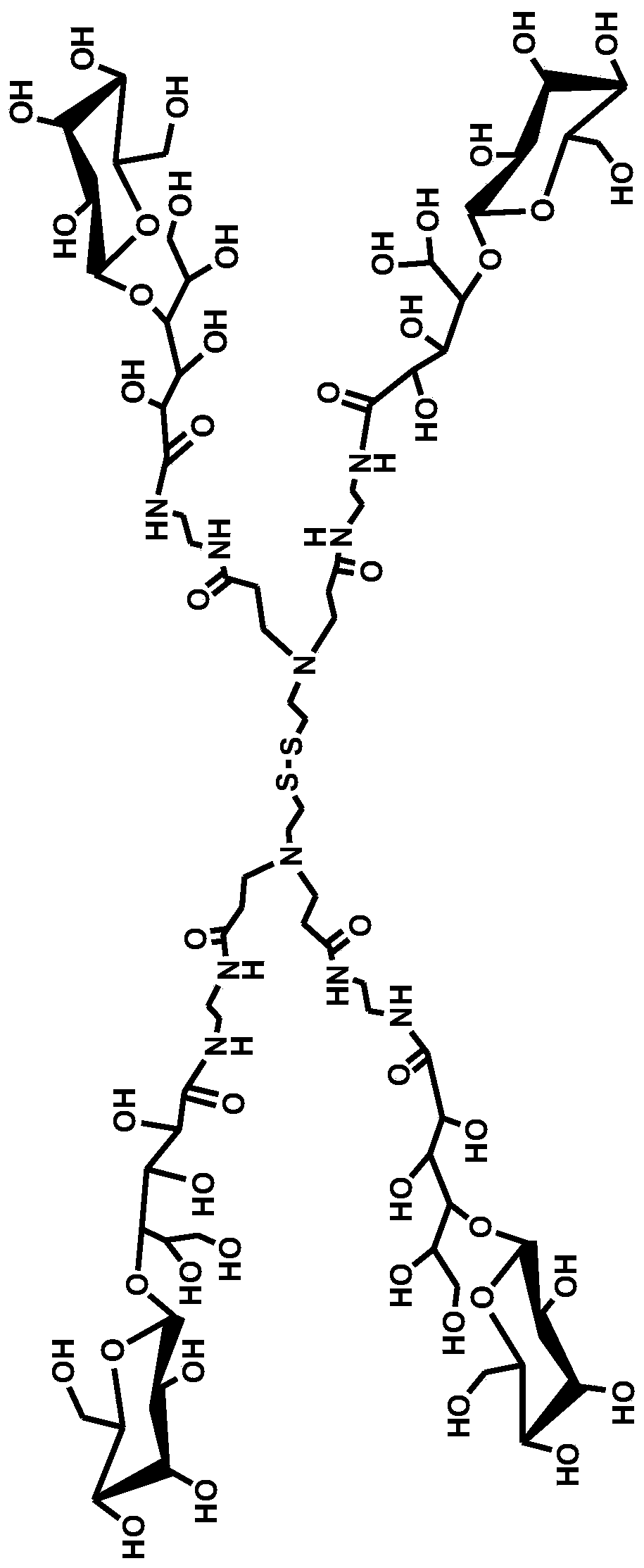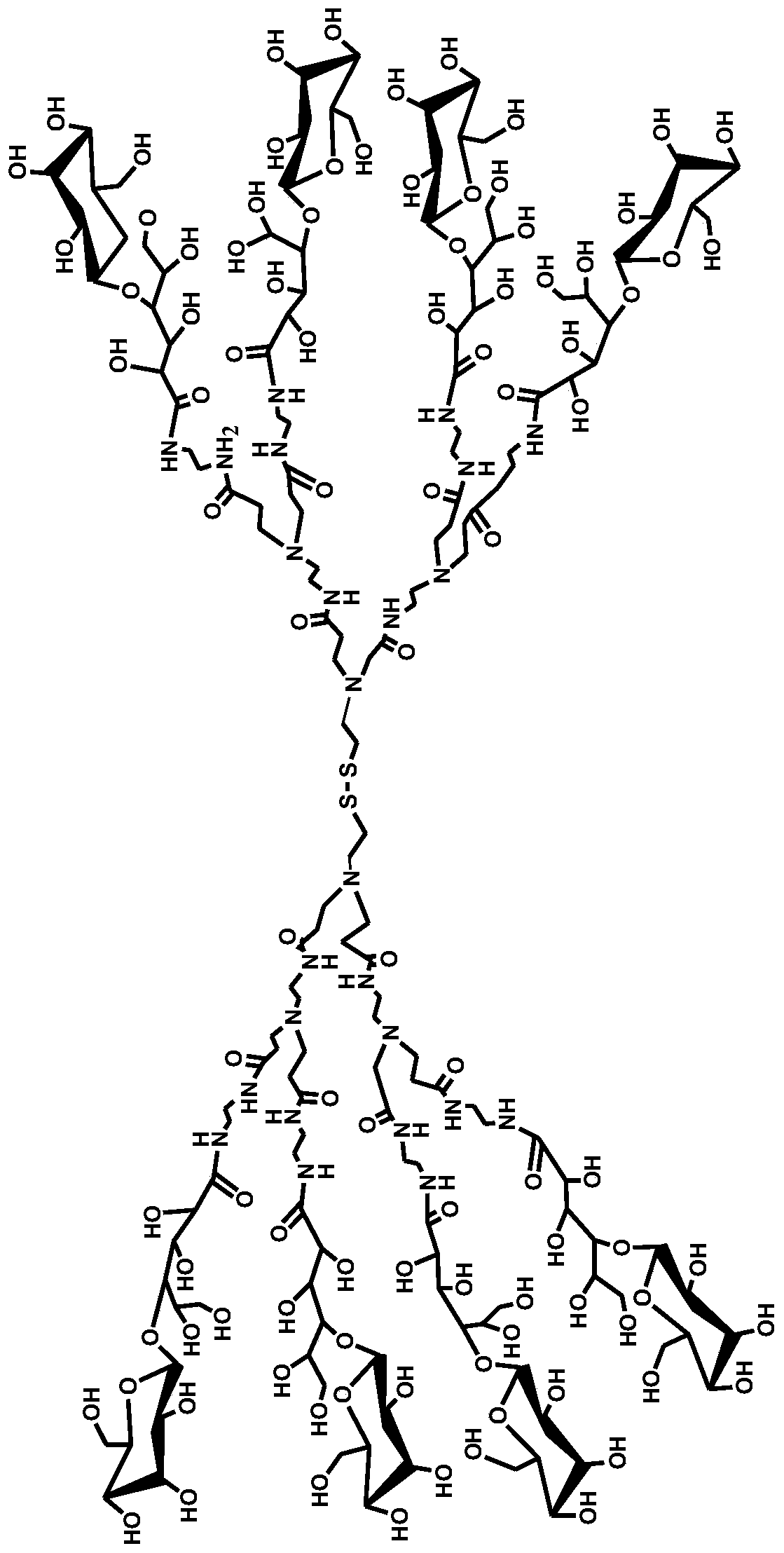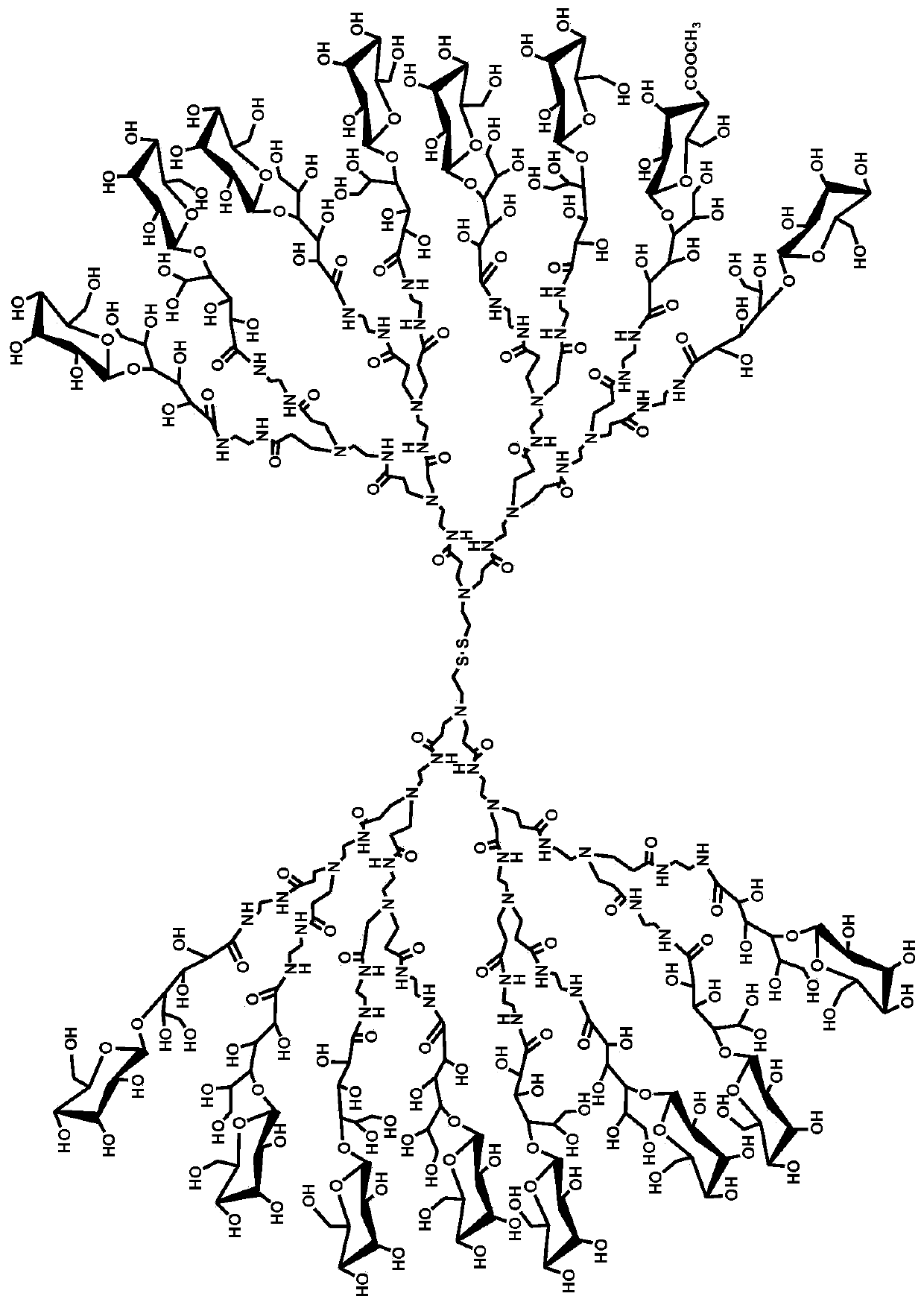Method for preparing arborescent lactose-containing polyamidoamine modified gold nano-clusters
A cystamine-containing polyamidoamine and polyamidoamine technology is applied in the directions of instruments, analytical materials, measuring devices, etc., to achieve the effects of strong fluorescence, improved fluorescence intensity and good product stability
- Summary
- Abstract
- Description
- Claims
- Application Information
AI Technical Summary
Problems solved by technology
Method used
Image
Examples
Embodiment 1
[0042] Embodiment 1: the synthesis (D 1 )
[0043] Add 373.5mg (1mmol) cystamine dihydrochloride and methanol into a round bottom flask, ultrasonically dissolve, vacuumize and blow nitrogen three times each, then place the flask in an ice-water bath; measure 0.71mL (8mmol) methyl acrylate In a centrifuge tube, add 0.9 mL of methanol, mix well, add dropwise into a round bottom flask with a syringe, and stir at room temperature for 24 hours after the dropwise addition is complete. After the reaction was completed, methanol and excess methyl acrylate were removed by rotary evaporation, and vacuum-dried at room temperature for 1 day to obtain D 0.5 (0.610 g, 85% yield). weighing D 0.5 (0.610g, 1.225mmol) and methanol were placed in a 25mL round-bottomed flask, and the flask was placed in an ice-water bath after vacuuming three times with nitrogen; measure 1.32mL (19.59mmol) ethylenediamine and 1.76mL methanol in a centrifuge tube Mix well and add dropwise to the round bottom f...
Embodiment 2
[0044] Embodiment 2: the synthesis (D 2 )
[0045] 0.874g (1.4mmol) D 1 Add methanol and methanol into a round bottom flask, evacuate nitrogen three times each, then place the flask in an ice-water bath; measure 1.95mL (22.8mmol) methyl acrylate into a centrifuge tube, and add 2.43mL methanol, mix well Add it dropwise into a round bottom flask with a syringe, and stir at 40°C for 72h after the dropwise addition. After the reaction was completed, methanol and excess methyl acrylate were removed by rotary evaporation, and vacuum-dried at room temperature for 1 day to obtain D 1.5 (1.298 g, 70% yield). weighing D 1.5 (1.298g, 0.994mmol) and methanol were placed in a 25mL round-bottomed flask, vacuumed three times with nitrogen and placed the flask in an ice-water bath; measure 2.12mL (31.8mmol) ethylenediamine and 2.83mL methanol in a centrifuge tube Mix well and add dropwise to the round bottom flask. After the dropwise addition was completed, the reaction was stirred at 5...
Embodiment 3
[0046] Embodiment 3: the synthesis (D 3 )
[0047] 1.46g (0.94mmol) D 2 Add methanol and methanol into a round bottom flask, evacuate nitrogen three times each, then place the flask in an ice-water bath; measure 2.67mL (30.08mmol) methyl acrylate into a centrifuge tube, and add 3.33mL methanol, mix well Add it dropwise into a round bottom flask with a syringe, and stir at 50°C for 96h after the dropwise addition. After the reaction was completed, methanol and excess methyl acrylate were removed by rotary evaporation, and vacuum-dried at room temperature for 1 day to obtain D 2.5 (1.328 g, 63% yield). weighing D 2.5 (1.328g, 0.454mmol) and methanol were placed in a 25mL round-bottomed flask, and the flask was placed in an ice-water bath after vacuuming three times with nitrogen; measure 2.91mL (43.6mmol) ethylenediamine and 3.88mL methanol in a centrifuge tube Mix well and add dropwise to the round bottom flask. After the dropwise addition was completed, the reaction was ...
PUM
 Login to View More
Login to View More Abstract
Description
Claims
Application Information
 Login to View More
Login to View More - R&D
- Intellectual Property
- Life Sciences
- Materials
- Tech Scout
- Unparalleled Data Quality
- Higher Quality Content
- 60% Fewer Hallucinations
Browse by: Latest US Patents, China's latest patents, Technical Efficacy Thesaurus, Application Domain, Technology Topic, Popular Technical Reports.
© 2025 PatSnap. All rights reserved.Legal|Privacy policy|Modern Slavery Act Transparency Statement|Sitemap|About US| Contact US: help@patsnap.com



